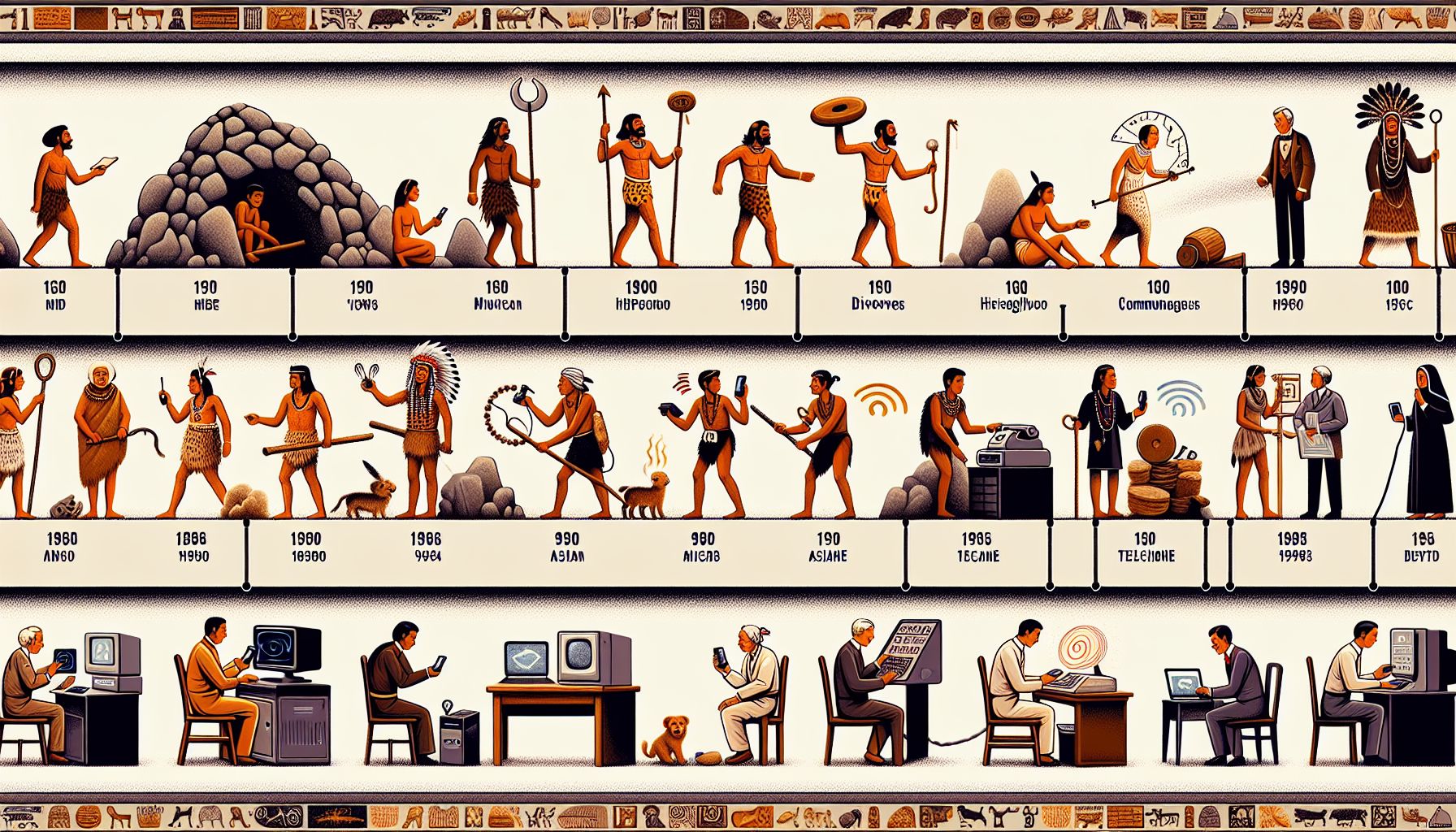📌 Let’s explore the topic in depth and see what insights we can uncover.
⚡ “Can you imagine a world without emojis or Wi-Fi? Let’s take a thrilling journey back in time to discover the ground-breaking inventions that transformed the way we shoot texts and memes today!”
Every time we tap a message on our smartphones or send an email, we are participating in an intricate network of communication that has been centuries in the making. Human communication has evolved from cave drawings and smoke signals to emojis and Wi-Fi signals, thanks to countless inventions and innovations. These developments have not only shaped the way we interact with each other but also revolutionized societies, economies, and cultures. In this blog post, we will journey through time, exploring groundbreaking inventions that have revolutionized communication.
📜 The Birth of Writing Systems

Revolutionary Moments in Communication History
The birth of writing systems is where our story begins. Around 3200 BC, the ancient Sumerians developed a system of symbols to record their trade transactions. Dubbed as cuneiform, this was the first known form of writing. It was a giant leap forward in human communication as it allowed people to store and transmit information across vast distances and long periods. The Egyptians took it a step further by creating hieroglyphs, a form of picture writing. This system was later simplified into the Phoenician alphabet, which was the precursor to the Greek and Latin alphabets we use today. Without these early writing systems, the rich tapestry of human history, culture, and knowledge might have forever remained a mystery.
📚 The Printing Press: Democratising Knowledge
Fast forward to the 15th century, and we encounter the creation of the printing press by Johannes Gutenberg. Before this invention, books were painstakingly handwritten by scribes, making them rare and expensive commodities accessible only to the elite. Gutenberg’s printing press democratized knowledge by making books more affordable and accessible to the masses. The impact of the printing press was nothing short of revolutionary. It ignited the spread of ideas and literacy, paving the way for the Renaissance, the Scientific Revolution, and the Reformation. It was a game-changer in communication, setting the stage for the mass media we know today.
🌐 The Telegraph and the Telephone: Shrinking the World
In the 19th century, two inventions—the telegraph and the telephone—brought about another seismic shift in communication. The telegraph, invented by Samuel Morse in 1837, enabled people to send messages across continents in mere minutes, a feat that had previously taken weeks or months. Not long after, in 1876, Alexander Graham Bell introduced the telephone, which allowed people to hear each other’s voices across vast distances. Suddenly, the world seemed a lot smaller. These inventions revolutionized not only personal communication but also business, news dissemination, and diplomacy.
📻 The Radio and Television: The Dawn of Broadcasting
The 20th century heralded the age of broadcasting with the invention of the radio and television. Guglielmo Marconi’s radio, invented in 1895, enabled wireless transmission of sound, allowing news, music, and entertainment to reach millions simultaneously. The radio was a lifeline during World War I and II, serving as the primary source of news and entertainment for households across the globe. A few decades later, the television took the world by storm. By marrying sound with moving images, it created a powerful medium that shaped public opinion, culture, and politics. From Neil Armstrong’s moon landing to the fall of the Berlin Wall, television brought historic moments into living rooms worldwide, making viewers feel they were part of the action.
📱 The Internet and Smartphones: The Digital Revolution
In the late 20th and early 21st centuries, the Internet and smartphones delivered the latest communication revolution. The Internet, a global network of networks, made information universally accessible, spawning countless applications such as email, social media, and video conferencing. Meanwhile, smartphones put a mini-computer in everyone’s pocket, enabling them to communicate, access information, and perform tasks on the go. These digital tools have broken down geographic barriers, creating a global village where communication is instantaneous and ubiquitous.
🧭 Conclusion
From cuneiform tablets and hieroglyphs to emails and emojis, the evolution of communication is a testament to human ingenuity and our inherent need to connect with others. Each invention—writing systems, the printing press, the telegraph, the telephone, radio, television, the Internet, and smartphones—has left an indelible mark on society, revolutionizing the way we share and consume information. As we look to the future, it’s exciting to imagine what the next breakthrough in communication might be. Will it be advanced AI, quantum computing, or something else entirely? Whatever it may be, one thing is certain: communication will continue to evolve, enhancing our ability to connect, share ideas, and understand each other better. For now, we can marvel at the journey so far and appreciate the historic inventions that have transformed the way we communicate.
🚀 Curious about the future? Stick around for more discoveries ahead!
